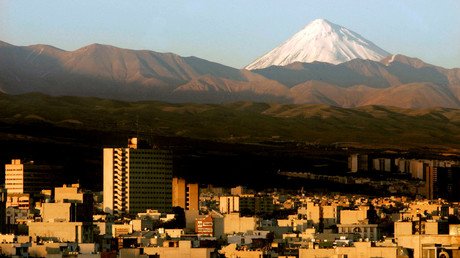Iran looks to barter oil as US sanctions bite

Faced with US sanctions, Iran is studying a revival of a plan to barter crude oil for goods, possibly resuming the scheme that it used to try to blunt the impact of the previous round of sanctions between 2012 and 2016.
Unable to bring in US dollars and euros ahead of the new US sanctions that kick in in early November, Iran is open to accepting agricultural products and medical equipment in exchange for its crude oil, Iranian Labor News Agency (ILNA) quoted the spokesman of the Parliament’s energy committee, Asadollah Gharekhani, as saying. According to Gharekhani, Iran will only trade with countries that buy its oil.
Considering that the US is pushing for “zero” Iranian oil exports and is pressing other countries to stop importing Iran’s oil, Tehran may not have many countries left to trade with.
“We have informed our oil customers that we will only buy their commodities if they buy our crude,” Gharekhani said.
In the previous sanctions on Iran between 2012 and early 2016, when Europe also imposed sanctions alongside the US to punish Iran for its nuclear program, Tehran resorted to barter and was offering gold bullions in vaults overseas or crude oil in exchange for food. Back then, the sanctions severely limited Iran’s ability to pay for imports of basic goods, which led to a spike in food prices. Those sanctions were not banning companies from selling food to Iran, but the transactions with banks were very difficult.
This time around, the US sanctions and the tough US approach to try to cut off as many Iranian oil barrels as possible have spooked banks, insurers, and shippers, who have started to wind down business with Iran for fear of coming under secondary sanctions.
In June, Iran’s crude oil exports stood at 2.280 million bpd, and condensate exports were 330,000 bpd, Iran’s oil ministry news service Shana reported earlier this week. Those levels are lower than the record-high in April and the still-high exports in May—the month in which US President Donald Trump withdrew from the nuclear deal and announced fresh sanctions on Iran.
Just after President Trump’s announcement, oil prices jumped, and analysts started to guesstimate how much Iranian oil barrels could be taken off the market by the end of this year. Few thought it would be 1 million bpd or more.
But the tough US stance on Iranian oil exports over the past two weeks has had even India—Iran’s second-largest oil customer after China—preparing for a drastic reduction of oil imports from Iran, as its companies and the sovereign are reportedly worried that they would lose access to the US banking system if they continue to import Iranian oil.
According to Bank of America Merrill Lynch, oil prices will hit $90 a barrel by the second quarter of 2019, as Iranian oil barrels are removed from the market and other supply disruption risks threaten the tightening oil market.
Morgan Stanley thinks that oil prices will jump to $85 a barrel as early as the second half of this year, because of the US push to remove as much Iranian oil from the market as possible. Morgan Stanley expects that Brent Crude will average $85 a barrel over the next six months—$7.50 higher than its previous estimate. Early on Thursday, Brent Crude was down 0.5 percent at $77.77.
Before lifting its oil price forecast this week, Morgan Stanley had expected that Iran would lose 700,000 bpd in oil exports through 2019 from the sanctions. But the tougher US approach now makes the bank’s analysts think that Iran’s exports to Europe, Japan, and South Korea—a total of 1 million bpd—would “fall to minimal levels.”
“Over the course of last week, downside risk to future Iranian oil supply has increased rapidly,” Martijn Rats, global oil strategist and head of the bank’s European oil and gas equity research, told CNBC.
This article was originally published on Oilprice.com
















